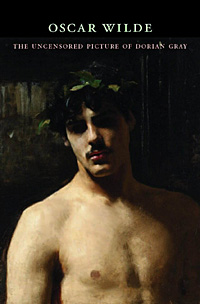 One of my friends mentioned on Twitter the other day they were reading this, specifically the “uncensored” edition. Curious as to what that exactly was, I shortly found out that meant Wilde’s actual original text; I knew the later book version was substantially revised from the original magazine publication, but didn’t realise how much that had been altered from Wilde’s original. This edition has not one but two introductions, both of which I learned interesting things from… one being that when Wilde prepared the book version he actually didn’t even have his own manuscript available to him, he had to work from the magazine text; also that Lippincott’s editors were apparently just as bothered by heterosexual immorality as homosexual; but perhaps most interestingly, that the word “homosexual” didn’t actually appear in English until 1892, and was first used as a noun only in 1912. Remarkable things, words…
One of my friends mentioned on Twitter the other day they were reading this, specifically the “uncensored” edition. Curious as to what that exactly was, I shortly found out that meant Wilde’s actual original text; I knew the later book version was substantially revised from the original magazine publication, but didn’t realise how much that had been altered from Wilde’s original. This edition has not one but two introductions, both of which I learned interesting things from… one being that when Wilde prepared the book version he actually didn’t even have his own manuscript available to him, he had to work from the magazine text; also that Lippincott’s editors were apparently just as bothered by heterosexual immorality as homosexual; but perhaps most interestingly, that the word “homosexual” didn’t actually appear in English until 1892, and was first used as a noun only in 1912. Remarkable things, words…
Anyway, I’ve read this before but only the book version, and it’s long enough since I read that that I couldn’t meaningfully compare this with it. But, as a text on its own, it was an interesting experience, remarkably compact (only about 150 pages or so)… maybe a little too much so? Chapter 9 is basically where Dorian starts going downhill under the influence of the “yellow book”—whereupon there ensues a compressed reworking of Huysmans’ A Rebours—but Wilde hints only very dimly at what Dorian actually does beyond just taking lifestyle tips from Des Esseintes. What are these atrocities that horrify other people so? Why did the somewhat abruptly introduced Alan Campbell refuse to enter Dorian’s house ever again? Well, I don’t suppose even Wilde thought he’d be able to get away with that sort of explicitness, but it’s veiled stuff nonetheless… To be honest, apart from the reintroduced gay stuff (such as that is), I’m not altogether sure what in this text might’ve been so offensive to readers in 1890, although readers and critics surely were left aghast by it back then (noted paragons of virtue W.H. Smith refused to stock it). A great book, though, in whatever form, and delightful to encounter again; plus, now I not only want to re-read the Huysmans book, I want to read W. Pater’s book on the Renaissance after reading about it in the introduction here…
Leave a comment